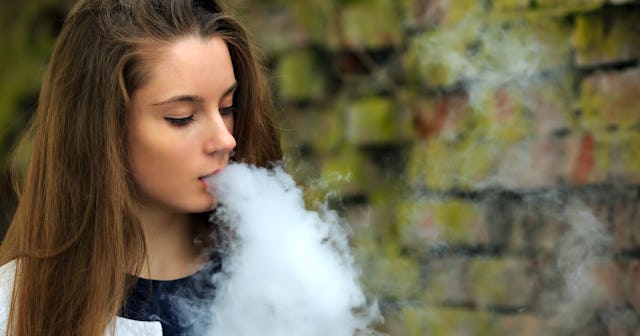CDC Survey Finds One Third Of Teens Are Vaping, Texting While Driving

The CDC survey is part of the Youth Risk Behavior Surveillance System
According to the CDC’s 2019 Youth Risk Behavior Survey, teens are engaging in some pretty risky behavior, from one third admitting to texting while driving and one third admitting to vaping.
Every two years, as part of the Youth Risk Behavior Surveillance System (YRBSS), the CDC conducts national, state, territorial, tribal government, and local school-based surveys of representative samples of 9th through 12th grade students in all 50 states and the District of Columbia. The latest survey was published Aug. 21, and it’s broken down into several sections, from sexual behaviors, dietary behaviors and physical activity, to alcohol, tobacco, and drug use.
In the sexual behaviors category, the survey found that more than 27 percent of high school students said they were sexually active within the last three months (before they took the survey), and nearly 90 percent of said sexually active students said they used a condom or a primary contraceptive method the last time they had sex. The survey also found that “using no pregnancy prevention method was more common among non-Hispanic black (23.2 percent) and Hispanic (12.8 percent) students compared with non-Hispanic white students (6.8 percent).”
Regarding tobacco, alcohol, and drug use, more than one-third of students said they vaped last year — an increase from more than 13 percent in 2017, according to Harold Wimmer, President and CEO of the American Lung Association. In a statement published yesterday, Wimmer said that the youth tobacco use data released from the CDC’s 2019 Youth Risk Behavior Survey “confirm that our nation is facing multiple public health crises simultaneously: the COVID-19 pandemic, continued racial health equity disparities, and a youth vaping crisis.”
While the 2019 CDC survey reports that 6 percent of teens smoke tobacco cigarettes and nearly 6 percent said they smoked cigars, Wimmer reports that the overall use of tobacco products among high schools students nearly doubled from 2017 to 2019: 19.5 percent to 36.5 percent.
“We need look no further for the cause of this spike than the rise of JUUL and now Puff Flow and Vuse, and the continued sale and proliferation of flavored tobacco products, including flavored vaping devices,” Wimmer said. “To protect kids, the American Lung Association has long called for menthol cigarettes and all flavored tobacco products, including e-cigarettes, to be removed from the marketplace.
Regarding substance abuse, nearly 30 percent of surveyed teens said they currently drank alcohol, 3.7 percent said they binge-drink, 22 percent said they used weed, and more than 7 percent said they currently abused prescription opioids. “Use of other substances, particularly current use of alcohol and marijuana, was common among students currently misusing prescription opioids,” the report states.
And on the road, teens’ driving behaviors are also alarming: 43 percent of surveyed students said they didn’t always wear a seat belt when a passenger in another person’s car, 17 percent rode with a drinking driver, 5 percent drove after drinking alcohol, and 39 percent texted or emailed while driving.
CDC
“Prevalence of not always wearing a seat belt was higher among students who were younger, black, or had lower grades. Riding with a drinking driver was higher among Hispanic students or students with lower grades. Driving after drinking alcohol was higher among students who were older, male, Hispanic, or had lower grades. Texting while driving was higher among older students or white students,” the report states.
YRBSS was developed in 1990 to monitor teens’ behaviors, particularly those that contribute to the leading causes of death, disability, and social problems among youth and adults in the U.S., like sexual behaviors, unhealthy dietary behaviors, inadequate physical activity, and tobacco, alcohol, and drug use.
“From 1991 through 2019, the YRBSS has collected data from more than 4.9 million high school students in more than 2,100 separate surveys,” the CDC states.
To view the entire 2019 Youth Risk Behavior Survey, visit the CDC’s website.
This article was originally published on